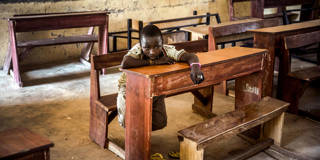Year after year, the international community falls further behind in upholding its commitment to provide quality education to all children by 2030. With the number of out-of-school children having far surpassed crisis levels, it's time to adopt a new approach.
LONDON – Continuous declines in international education aid are depriving half of all young people in the developing world – some 800 million children – of the education they will need to secure meaningful employment in the future. Having fallen from $13.2 billion to $13 billion this year, total education aid (from bilateral and multilateral sources) now accounts for just 7% of the world’s total aid budget.This means that all the development aid in the world is worth little more than $10 per child in need, which is not even enough to pay for secondhand textbooks.
Across the developing world, the average level of education is 100 years behind that of the West. In Africa, annual spending on schooling averages just $200 dollars per child, whereas developed economies spend 40 times that: $9,500 per head. Though the international community has committed to achieving universal primary and secondary education by 2030, at least 200 million children will be out of school each year between now and then; another 400 million will not advance past the primary level. While African and Asian countries might appear to offer an abundant supply of labor, endemic skill shortages as a result of inadequate education funding will mean that they cannot attract the inward investment needed to pursue further development.
At the global level, the share of total aid dedicated to education has fallen steadily from its 2007 peak of 11%, even though it is common knowledge that education is one of the most effective ways to achieve the United Nations Sustainable Development Goals (SDGs) for health, employment, and quality of life. The European Union’s recent announcement that it will allocate 10% of its humanitarian aid to education is welcome, but hardly sufficient.

LONDON – Continuous declines in international education aid are depriving half of all young people in the developing world – some 800 million children – of the education they will need to secure meaningful employment in the future. Having fallen from $13.2 billion to $13 billion this year, total education aid (from bilateral and multilateral sources) now accounts for just 7% of the world’s total aid budget.This means that all the development aid in the world is worth little more than $10 per child in need, which is not even enough to pay for secondhand textbooks.
Across the developing world, the average level of education is 100 years behind that of the West. In Africa, annual spending on schooling averages just $200 dollars per child, whereas developed economies spend 40 times that: $9,500 per head. Though the international community has committed to achieving universal primary and secondary education by 2030, at least 200 million children will be out of school each year between now and then; another 400 million will not advance past the primary level. While African and Asian countries might appear to offer an abundant supply of labor, endemic skill shortages as a result of inadequate education funding will mean that they cannot attract the inward investment needed to pursue further development.
At the global level, the share of total aid dedicated to education has fallen steadily from its 2007 peak of 11%, even though it is common knowledge that education is one of the most effective ways to achieve the United Nations Sustainable Development Goals (SDGs) for health, employment, and quality of life. The European Union’s recent announcement that it will allocate 10% of its humanitarian aid to education is welcome, but hardly sufficient.